The latest statistics claim that Google search is 373 times bigger today than ChatGPT search, yet most of us feel like it’s the other way around.
That’s because lots of people aren’t clicking anymore. They’re asking.
Instead of browsing through search results, they’re getting instant, conversational answers from tools like ChatGPT, Claude, and Perplexity. These generative engines are rapidly changing how people discover and consume information, and in many cases, your website isn’t even part of the equation.
According to Search Engine Journal, click-through rates for informational queries are dropping in sectors where AI Overviews appear in Google. At the same time, another report found that ChatGPT is processing more than 1.7 billion visits per month, traffic that might have previously gone through traditional search.
This shift challenges the way we think about SEO and underscores the importance of abandoning outdated playbooks and developing new, more effective strategies that are better suited to this new terrain.
In this guide, I’ll break down what Generative Engine Optimization (GEO) really is, how it differs from classic SEO, and how you can evolve your strategy to stay discoverable no matter where or how people search.
Contents
- What is Generative Engine Optimization (GEO)?
- How generative AI is reshaping the search landscape
- GEO vs. SEO: 5 major differences
- How to build a GEO strategy that works
- How to measure GEO success
- Generative engine optimization infographic
What is Generative Engine Optimization?
Generative Engine Optimization (GEO) is the practice of optimizing content to appear as authoritative sources or direct responses within generative AI platforms like ChatGPT, Claude, Gemini, and Perplexity.
Unlike traditional SEO, which focuses on ranking in search engine results pages (SERPs) to earn clicks, GEO aims to position your content as the primary source that AI engines reference when generating answers. The goal shifts from earning a click to having your information included in the AI’s response.
This represents a fundamental change in how we approach content optimization:
- Traditional SEO: Optimize for visibility in search results → Earn clicks → Convert users on your site
- GEO: Optimize to be the authoritative source → Get cited in AI responses → Build brand recognition and authority
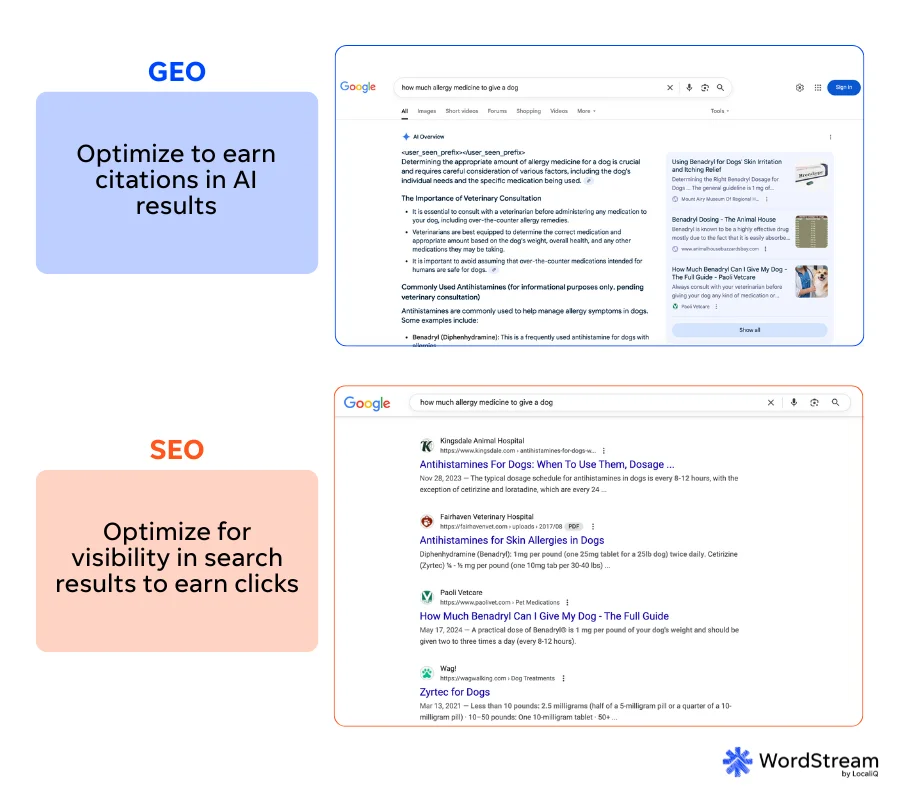
This distinction is crucial because generative engines operate on different principles than traditional search:
- They don’t prioritize sending traffic to external websites.
- They synthesize information from multiple sources into a single response.
- They evaluate authority and trustworthiness differently from Google.
- They prioritize content that fits their training parameters and retrieval mechanisms.
👀 Looking for more ways to drive people to your site? Free guide >> 25 Ways to Increase Traffic to Your Website
How generative AI is reshaping the search landscape
The shift toward generative AI as a primary information source is happening faster than many marketers realize. And the numbers back it up:
- According to Gartner, 35% of Gen Z now uses AI tools as their first stop for research questions, compared to 19% for millennials and 7% for Gen X.
- Perplexity.ai, which launched in late 2022, already processes over 10 million unique queries daily.
- Stack Overflow reported a 35% reduction in question volume for programming topics since the launch of ChatGPT, as developers increasingly turn to AI for coding solutions.
This shift is particularly evident in specific sectors. “Technical searches (programming, data analysis), factual queries, and how-to content are migrating rapidly to AI platforms, while commercial searches still largely happen on traditional search engines,” explains Stephanie Yoder, Director of Content at Rebrandly.
“We’ve also seen a dramatic shift in discovery patterns, especially for deep-dive educational content,” Stephanie said. “People who used to spend 15–20 minutes reading multiple articles now get a synthesized answer from AI in under five minutes.”

I received an immediate response to my query via ChatGPT vs. one of the ranking blog posts for the same search in Google.
This evolution creates both challenges and strategic opportunities. While websites providing straightforward factual information may experience traffic declines, those delivering unique insights, original research, and expert perspectives can position themselves as the authoritative sources that AI engines rely upon.
🤖 Want to use AI the right way? Free download >> The Complete Guide to AI in Marketing
GEO vs. SEO: What’s the difference?
Let’s dive into the five major differences between GEO and SEO.
1. Citations replace links (and they’re optional)
In traditional SEO, links are everything. They drive traffic, pass authority, and serve as the primary way users navigate to your content.
In the generative AI world, citations have replaced links. Links are now few or absent from the generated content.
When ChatGPT provides an answer synthesized from multiple sources, it rarely mentions where the information came from, let alone links to it.
Here’s a real-world example: I asked ChatGPT what plants keep mosquitoes away. It provided me with a list and tips but didn’t provide any sources.
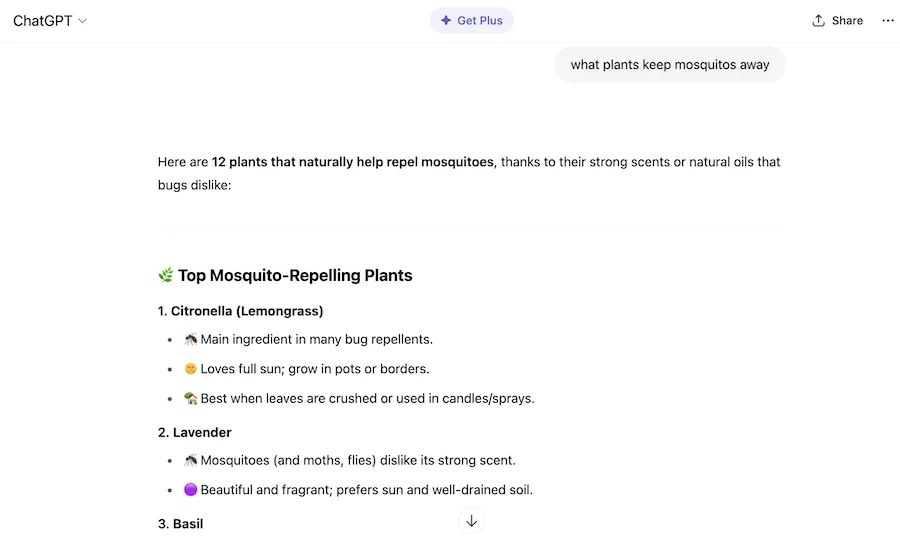
Even Perplexity, which does provide source attribution, typically lists references at the bottom of responses where, according to industry Reddit discussions, many users never scroll.
GEO tip: Create “citation bait” content that generative engines will naturally pull in:
- Develop unique statistics through original research.
- Craft clear, concise definitions that are easy for AI to extract.
- Structure information in a way that makes it easy for AI to parse (tables, lists, step-by-step guides).
- Create memorable statements and frameworks that are distinctive to your brand.
2. Authority signals matter more than ever
Generative AI engines draw from sources they consider authoritative, making it harder for smaller or newer websites to gain visibility. However, what constitutes “authority” for an AI differs from Google’s traditional ranking factors.
While Google uses metrics like backlinks, domain age, and engagement signals, generative AI models are trained on vast datasets where certain sources appear more frequently and are treated as more reliable. This creates a new paradigm for establishing authority.
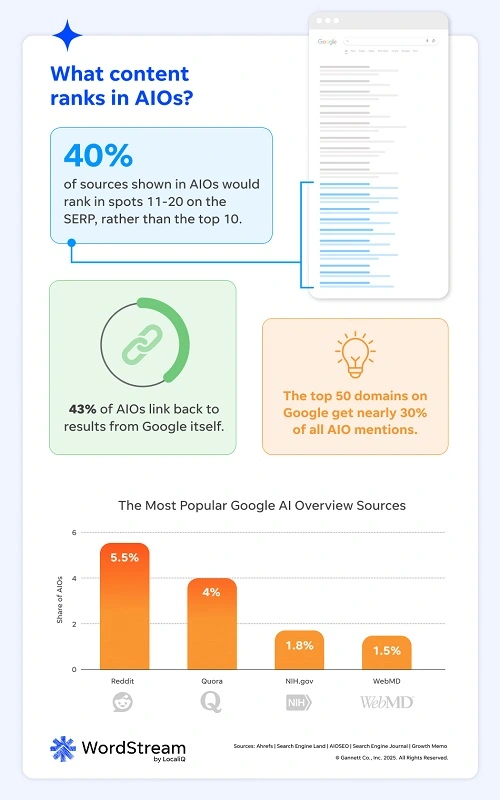
For AI platforms, authority comes from:
- Consistent presence across multiple high-quality platforms.
- Recognition from established industry voices.
- Clear expertise signals (author credentials, professional affiliations).
- Structured content that follows well-established formats.
GEO tip: Build multi-dimensional authority signals that generative AI can recognize:
- Publish on your domain but also on respected industry platforms.
- Secure mentions from recognized experts in your field.
- Include clear author credentials and expertise markers.
- Create content that demonstrates specialized knowledge AI can’t synthesize.
3. Structured, fact-rich content becomes premium fuel
Generative AI models love structure. They’re designed to identify patterns, extract key information, and recognize relationships between concepts. This makes highly structured, fact-dense content particularly valuable for these systems.
Content that performs best in generative engines includes:
- Clear headings and subheadings that follow logical hierarchies.
- Bulleted and numbered lists that organize information.
- Tables that present comparative data.
- FAQ sections that directly address specific questions.
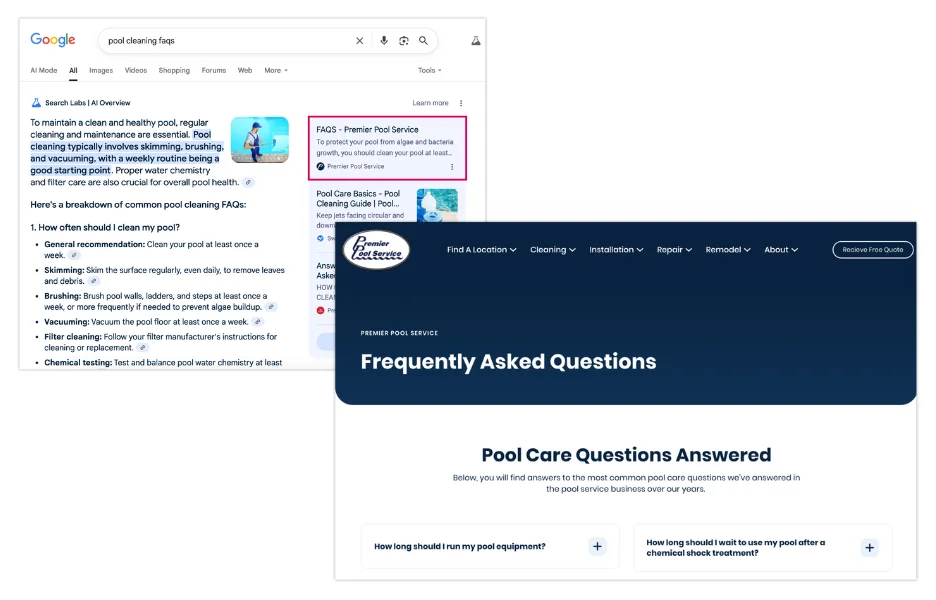
- Step-by-step guides with numbered instructions.
- Clear definitions and explanations of concepts.
This preference for structure explains why Wikipedia content appears so frequently in AI responses. It follows consistent formatting patterns that make information easy to extract.
GEO tip: Structure your content for maximum AI parsing efficiency:
- Use clear, descriptive headers that signal content relevance.
- Organize information in lists, tables, and other structured formats.
- Include concise definitions and explanations of key concepts.
- Add schema markup to enhance AI understanding of your content.
- Create dedicated FAQ sections that directly answer common questions.
As Stephanie puts it: “The content that performs best in both traditional and generative search follows similar principles: it’s well-structured, authoritative, and clearly addresses user needs. The difference is that AI can extract and synthesize this information without requiring the user to visit your site.”
Get more tips to optimize your content for AI here.
4. Brand visibility must expand beyond traditional search
In traditional SEO, ranking your own website is the primary goal. In GEO, your content needs to exist wherever generative AI might draw from.
When answering a question about local marketing strategies, generative AI might pull information from:
- Facebook community groups
- Yelp reviews and responses
- Local business directories
- Small business forums
- Industry-specific blog comments
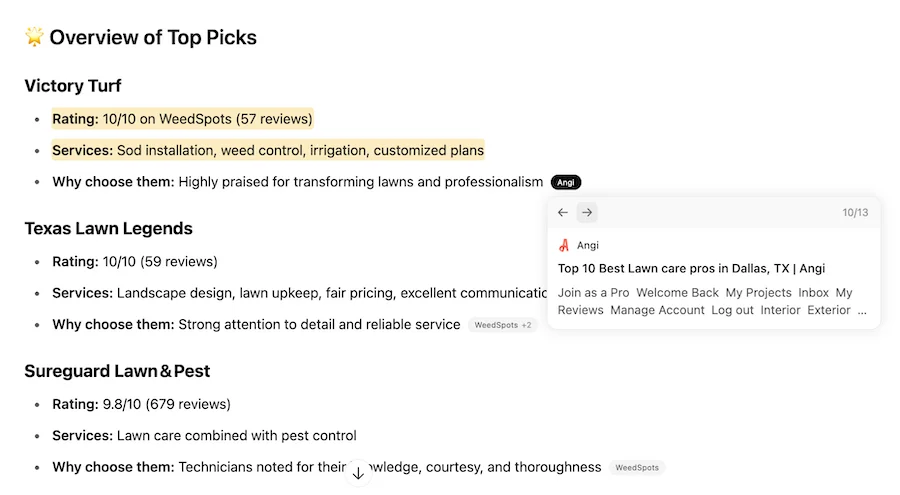
This means relying solely on your website for visibility is no longer sufficient. Your brand needs to be present across multiple platforms in a consistent, recognizable way.
GEO tip: Distribute expertise across the platforms that feed AI systems:
- Participate actively in industry forums and communities.
- Publish on major content platforms (Medium, LinkedIn, etc.).
- Create video content with optimized transcripts.
- Engage in podcast interviews to generate transcribed content.
- Contribute to open-source projects and public knowledge bases.
“Brand mentions across diverse platforms create a network effect for AI visibility,” said Oskar Duberg, a Freelance Content Specialist. “When AI sees your brand referenced in multiple authoritative contexts, it’s more likely to include you in responses, even without direct links.”
5. Content strategies are now prompt-driven
People interact with generative AI differently than they do with search engines. Instead of short keyword phrases, they use conversational language, ask follow-up questions, and specify exactly what they want.
This creates a new dimension of optimization: creating content that aligns with how people prompt AI systems.
Consider these differences:
Traditional search query: “best accounting software”
AI prompt: “What’s the best accounting software for a family-owned restaurant with 12 employees that needs to track inventory and has a limited tech budget?”
Traditional search query: “how to promote small business”
AI prompt: “Can you suggest affordable marketing tactics for a new hair salon in a suburban area, focusing on attracting families and building repeat customers?”
These longer, more specific prompts require content that addresses nuanced questions and provides contextual information. One-size-fits-all content optimized for short keywords won’t satisfy these detailed requests.
GEO tip: Create content that anticipates conversational prompts:
- Research common question patterns in your industry.
- Develop content that addresses specific use cases and scenarios.
- Include comparisons that help AI differentiate between similar options.
- Provide context-specific information (recommendations for different business sizes, industries, etc.).
- Create content that follows natural conversation flows with logical follow-up points.
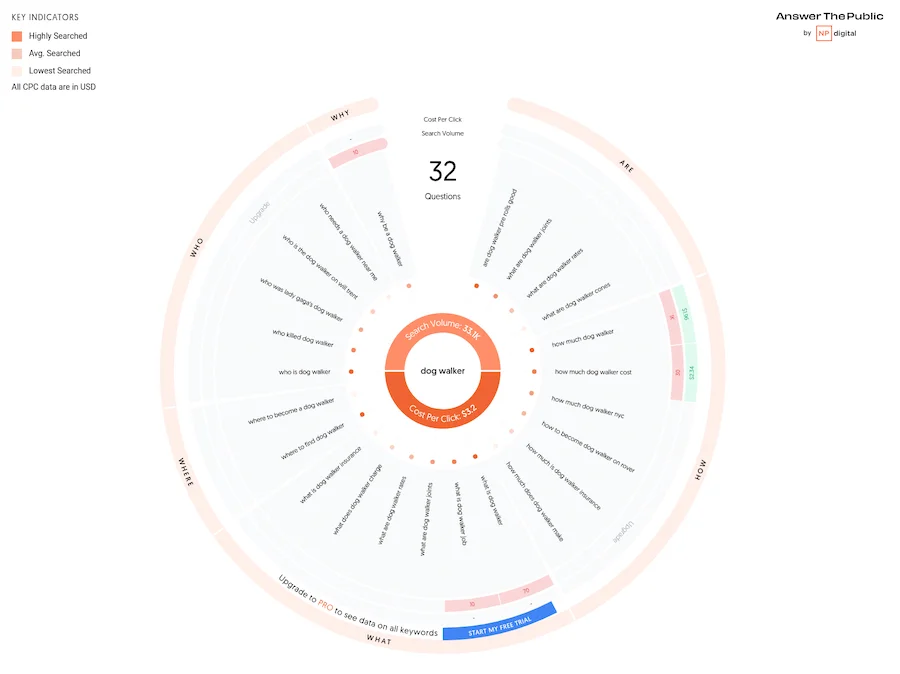
You can use a keyword research tool or a tool like AnswerThePublic to find related queries to optimize for.
🔎 Need help finding the right keywords? Try our Free Keyword Tool!
How to build a GEO strategy that works
Now that you understand the differences between GEO and traditional SEO, here are tips to build your strategy.
1. Design content for AI ingestion
The first step in effective GEO is creating content that’s easily understood and extracted by AI systems. This goes beyond simple formatting to consider how AI processes and prioritizes information.
Key principles for AI-optimized content:
- Front-load critical information: Place key facts, definitions, and insights in the first few paragraphs.
- Use descriptive, keyword-rich headers: Make a section’s purpose immediately clear.
- Create self-contained sections: Each content block should stand on its own while fitting into the larger piece.
- Include clear signals of expertise: Demonstrate authority through data, expert quotes, and specific experience.
- Prioritize factual accuracy: AI systems increasingly verify information across sources.
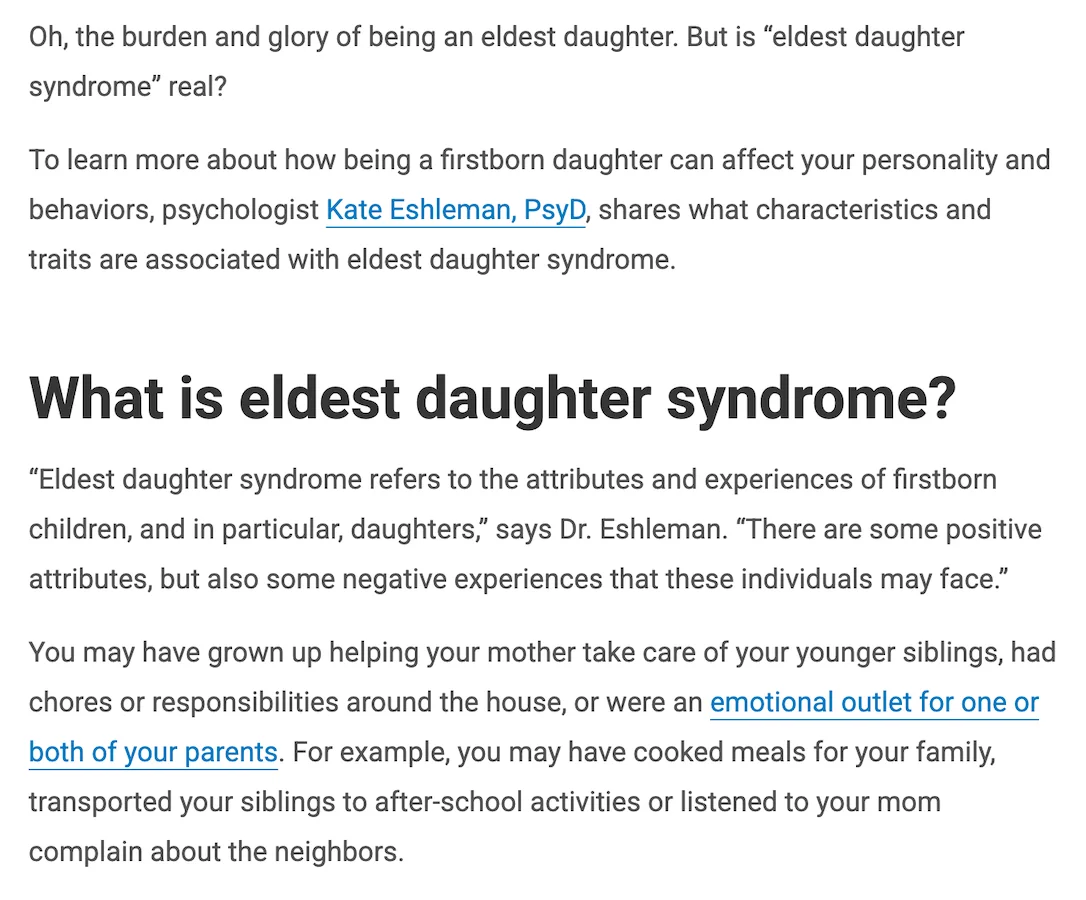
💕 Want more tips and ideas? We’ve got 130+ for you! Get the guide >> 130+ of the Best Online Marketing Tips for Generating More Traffic, Leads, & Sales
2. Create multi-modal content
Generative AI is rapidly evolving beyond text to understand and generate responses based on images, video, and audio. This creates opportunities to optimize multiple content types for AI visibility.
Strategies for multi-modal GEO:
- Optimize video content with structured transcripts: Include timestamps, speaker identification, and clear section markers.
- Add descriptive alt text to images: Help AI understand visual content with detailed descriptions.
- Create data visualizations with clear labels: Make charts and graphs interpretable for AI systems.
- Develop content that combines multiple formats: Publish articles with embedded videos, images, and structured data.
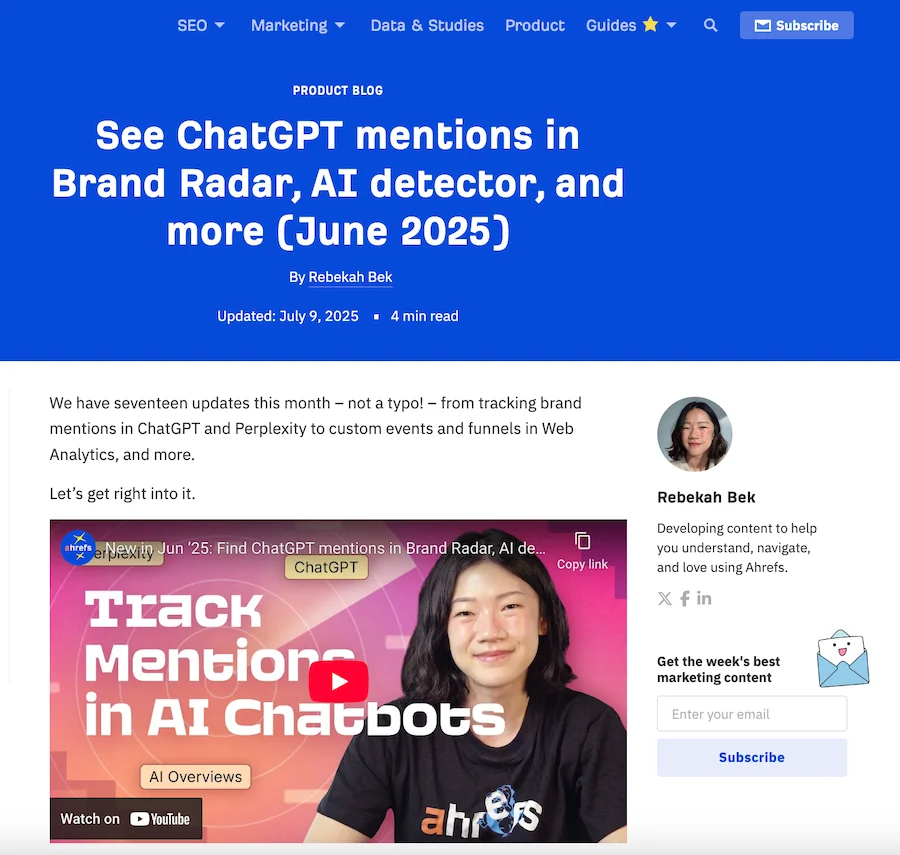
This approach ensures that when ChatGPT-4 or Google’s Gemini analyzes a topic you’ve covered, you’ll have a higher likelihood of being referenced.
3. Use digital PR and thought leadership for AI visibility
Building authority signals across the digital ecosystem is crucial for GEO success. This requires a strategic approach to digital PR and thought leadership that ensures your brand is recognized as an authoritative source by AI systems.
Effective strategies for building AI-recognizable authority:
- Secure mentions in respected industry publications: Focus on quality over quantity.
- Develop signature frameworks or methodologies: Create distinctive approaches that become associated with your brand.
- Participate in industry research reports: Contribute data or expertise to major studies.
- Build personal brand authority for key team members: Establish individual expertise that reinforces organizational authority.
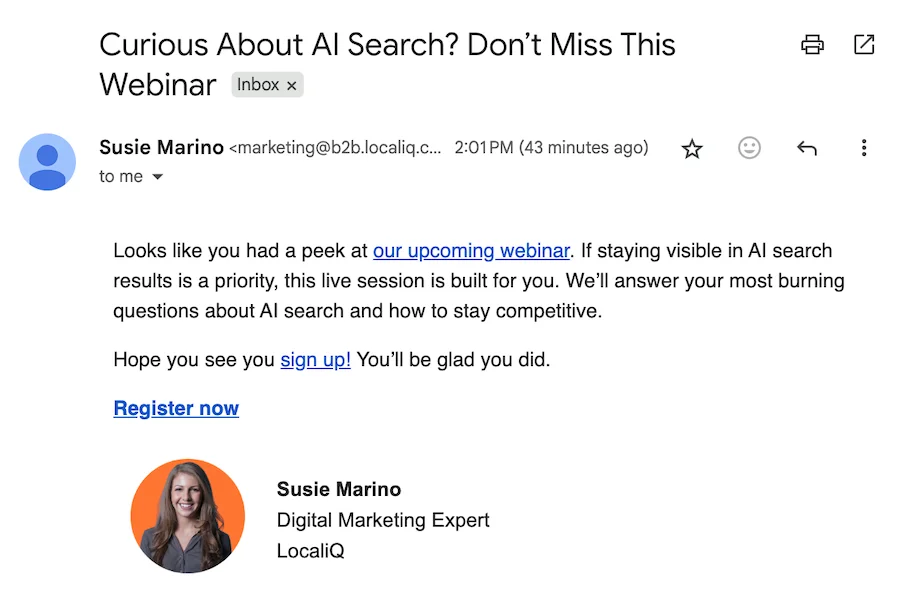
- Create a consistent presence on platforms that feed AI training data: Regularly publish on high-authority sites.
This multi-platform approach ensures that when generative AI responds to questions about visual web development or no-code tools, Webflow’s perspectives are frequently included, even without direct attribution.
4. Future-proof your content strategy for GEO
As generative AI evolves, maintaining visibility will require an adaptive, forward-looking strategy that balances traditional SEO with emerging GEO practices.
Key principles for a future-proof content approach:
- Balance depth with accessibility: Content that’s both comprehensive and easy for AI to parse.
- Invest in proprietary data: Original research that can’t be synthesized from other sources.
- Develop a distinctive brand voice: Unique perspectives that stand out in AI-generated content.
- Focus on expertise areas: Double down on topics where you have genuine authority.
- Create content that answers “why,” not just “what”: Provide context and reasoning that AI struggles to synthesize.
How to measure GEO success
Measuring GEO effectiveness requires new metrics beyond traditional SEO KPIs like rankings and organic traffic. Different tracking approaches are needed since the goal is to appear in AI-generated responses rather than drive direct website visits.
Key metrics for GEO success
Here are the metrics to keep an eye on:
- Brand mention frequency: How often your brand appears in AI responses to relevant queries.
- Accuracy of representation: Whether AI systems correctly represent your products, services, and perspectives.
- Authority positioning: Whether you’re positioned as a primary or secondary source.
- Attribution rate: How often your brand receives direct attribution in AI responses.
- Competitive presence: How your mention frequency compares to competitors for similar queries.
Tools to measure GEO results
Several tools are emerging to help track these metrics:
- Perplexity Labs: Allows monitoring of source attribution in Perplexity responses.
- ContentLab AI: Tracks brand mentions across multiple AI platforms.
- BrandMentions: Expanded to include AI mention monitoring.
- Custom prompt testing: Systematically testing key industry prompts across AI platforms.
“We’re still in the early days of GEO measurement,” Oskar said. “But forward-thinking companies are already building systems to track their visibility in AI responses, similar to how we once tracked SERP rankings.”
A practical approach is to create a “prompt map” of the key questions in your industry, then regularly test these prompts across major AI platforms to track:
- Whether your brand is mentioned
- How prominently you’re featured
- Whether information is accurate
- If competitors are mentioned more frequently
This data can help guide your GEO strategy and measure improvement over time.
GEO and the new search paradigm
We’re witnessing the most significant shift in information discovery since Google’s inception. Just as some businesses failed to adapt to the move from print to digital, those who ignore the rise of generative AI risk becoming invisible in the new search landscape.
But this shift also creates unprecedented opportunities. Brands that understand how to create AI-optimized content, build recognized authority, and maintain presence across the digital ecosystem will find themselves naturally featured in the AI responses that increasingly shape how people find information.
The future of search is not about choosing between traditional SEO and GEO—it’s about creating an integrated strategy that ensures visibility regardless of how people seek information.
As you develop your approach, remember that while technology changes rapidly, the fundamentals remain the same: providing genuine value, demonstrating clear expertise, and meeting user needs will always be rewarded, regardless of which algorithms or AI systems stand between you and your audience.
For brands willing to embrace this new paradigm, the opportunities are just beginning to unfold.
Check out this generative engine optimization infographic for a quick roundup of the information we covered:








